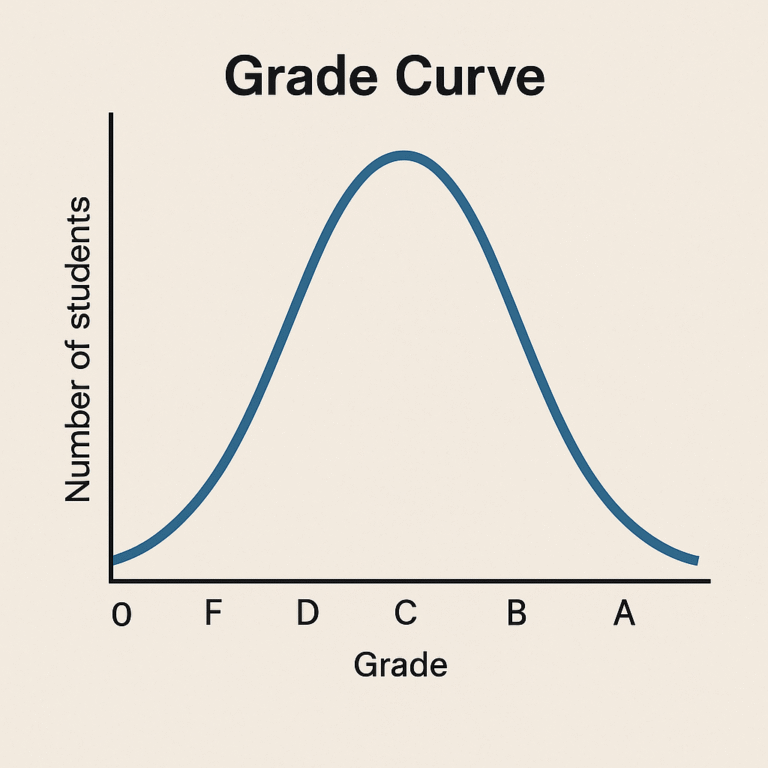Grading has always been a critical part of education, but not all systems are created equal. One method that has sparked debates among teachers, students, and parents is the grade curve. This approach adjusts student scores based on the overall performance of the class, sometimes raising or lowering individual marks in the process. But what exactly is a grade curve, why do schools use it, and how does it affect learners? Let’s dive deep into this educational concept.
What Is a Grade Curve?
A grade curve is a statistical method used to adjust student grades relative to the highest or average score in the class. Instead of sticking to a fixed grading scale (for example, 90–100% = A, 80–89% = B), the curve shifts the distribution of grades so that they better fit a pattern—often a bell curve.
In simpler terms, curving grades means that a test where most students scored poorly might see higher grades after adjustment. Conversely, if everyone does exceptionally well, the curve could actually make it harder to achieve the top marks.
Why Do Educators Use the Grade Curve?
There are several reasons teachers and institutions apply the grade curve system:
-
Leveling difficulty across tests
Not all exams are perfectly designed. Some may end up harder than intended, and curving ensures students aren’t unfairly penalized. -
Encouraging competition
Since a curve often rewards relative performance, it can motivate students to strive harder compared to peers. -
Maintaining consistency
In large universities, professors may want grade distributions to align with historical averages. Curving helps keep results predictable.
Types of Grade Curves
Not all grade curves work the same way. Here are the most common types:
1. Bell Curve
The most recognized method, the bell curve distributes grades so that most students fall in the middle (C range), with fewer at the extremes (A or F).
2. Adding Points
Sometimes instructors simply add a fixed number of points to each student’s score. For example, if the highest score was 85 out of 100, the teacher might add 10 points to everyone’s grade.
3. Scaling Based on the Highest Score
In this approach, the top score becomes the new maximum. If the best score was 92%, it’s scaled to 100%, and all other scores adjust proportionally.
Advantages of the Grade Curve
When used fairly, a grade curve can benefit both students and educators.
-
Reduces the impact of unusually tough exams
-
Rewards effort relative to peers
-
Aligns grades with real-world performance distribution
-
Helps identify top performers in competitive programs
For example, in engineering or medical programs, where exams are notoriously difficult, a curve can prevent mass failures while still highlighting the best achievers.
Disadvantages of the Grade Curve
Despite its usefulness, the grade curve isn’t perfect. Critics argue it can:
-
Create unnecessary competition: Instead of collaboration, students may view peers as obstacles.
-
Be unfair in small classes: A single high or low score can disproportionately affect the curve.
-
Demotivate students: If someone knows only a small percentage will get A’s, they may feel discouraged.
-
Mask teaching flaws: Sometimes low performance is due to poor instruction, not student ability.
Grade Curve vs. Traditional Grading
To understand its impact, let’s compare the grade curve with standard grading:
| Aspect | Traditional Grading | Grade Curve |
|---|---|---|
| Basis | Fixed percentage scale | Relative to class performance |
| Fairness | Same for all students | Depends on peer performance |
| Stress | Predictable outcomes | Can increase competition |
| Use Case | General classrooms | Competitive or advanced courses |
Both systems have merits, but the curve tends to be more controversial, especially when fairness is questioned.
Does the Grade Curve Really Help Students?
The effectiveness of a grade curve largely depends on context. In highly competitive programs, it ensures that only the strongest students achieve top marks, preserving academic rigor. However, in collaborative learning environments, it can hurt teamwork and discourage mutual support.
Students often feel the curve is a “gamble.” If surrounded by brilliant classmates, they might struggle to get higher grades. On the flip side, being in a weaker-performing group could inflate their marks.
Modern Perspectives on the Grade Curve
With the rise of new educational approaches, many institutions are rethinking the grade curve. Instead of focusing on competition, schools are adopting mastery-based grading, where students are measured against clear learning objectives rather than peers.
However, in competitive fields like law, medicine, or STEM programs, curves remain common. They ensure that grades reflect both effort and relative achievement.
Tips for Students Dealing with a Grade Curve
If your course uses a grade curve, here are a few strategies to cope:
-
Focus on mastery, not just competition – Learn the material deeply; the curve is only a bonus.
-
Collaborate when possible – Even in competitive settings, study groups can improve everyone’s performance.
-
Track historical curves – If professors consistently use the same method, knowing the pattern helps.
-
Stay consistent – Since curves reward relative standing, steady performance is key.
Final Thoughts on the Grade Curve
The grade curve is a double-edged sword in education. While it can soften the blow of tough exams and maintain consistency, it may also fuel unhealthy competition and discourage collaboration. Whether it helps or hurts largely depends on the subject, class size, and teaching style.
At the end of the day, students should treat the curve as a secondary factor. True academic success lies not in outscoring peers but in gaining lasting knowledge and skills.


